Food as Energy, Part III (Ghee-Roasted Carrots & Lentils with Smoky Green Sauce)
Humor me for a minute and think back to your high school science class. You'll remember learning about chlorophyll being the pigment that gives plants their green color and allows them to derive energy directly from the sun. And that eating these chlorophyll-rich plants increases production of hemoglobin, the molecule responsible for carrying oxygen in our blood. You probably were also told that oxygen-rich blood is the most essential element for cell energy because unlike plants, we humans cannot derive energy directly from the sun. Or can we?!
This is where it gets interesting. Researchers have discovered a new mechanism by which humans can more efficiently and safely derive energy. These findings suggest our cells might be able to use the chlorophyll molecules in our blood to convert sunlight into energy. How cool is that?!
In practical terms this means if we are eating a chlorophyll-rich diet and are exposed to sunlight without sunscreen, our cells have the capability of a 20 fold increase in ATP production. Even better news is that this process of making energy is also less damaging to our body, as it does not cause oxidative stress or produce free radicals, the harmful by-products from the regular oxygen production process.
But now I can hear you telling me, "But Katie I don't want to be a solar-powered human at the risk of skin cancer!" And don't worry, you won't have to. This research also suggests that enough chlorophyll in our body can offset the average negative effects of sun damage. But of course our individual risk also depends on other variables such as the melanin in our skin (darker skin has a protective effect), family and sunning history, how long we're in the sun, and other antioxidant compounds in our diet. But overall, we've been hearing for years that we need regular unprotected sun exposure for Vitamin D production, so now there are two reasons for getting safe, but direct sun exposure that we simply cannot ignore if we want to do our bodies good.
Bottom Line
Sun or no sun, chlorophyll is an essential element for health all the way down to the cellular level. It also contributes blood-fortifying nutrients, and its antioxidant and anti-inflammatory properties have a cleansing effect in the body, attaching to toxins and metals and removing them. In simple terms, all of this equates to energy! And even more energy and safer use of energy when we get some sun!
Food as Energy Wrap-Up
As a society we are accustomed to treating problems of low energy with quick-fix solutions; coffee, coke, energy drink, sweets. (And who's to blame us, there's a lot of money to be made marketing products for instant gratification.) If we suffer from chronic low energy, turning to these quick-fix solutions alone only mask the symptoms and ignore or exacerbate potential underlying causes such as chronic fatigue, poor sleep, faulty metabolism or unstable blood sugar. But by taking a long-term approach to supporting our energy, we can shift our focus to building energy-sustaining practices into our lifestyle, such as those discussed in this Food as Energy series and outlined below, that become the norm in our eating patterns rather than the exception and contribute to a steadier, more reliable source of sustained energy.
- Moderate caffeine consumption
- Food combining
- Chlorophyll-rich diet
CHLOROPHYLL-RICH DIET
What exactly would a chlorophyll-rich diet look like? Well, probably exactly what you think….lots of green foods! Below I've listed sources, in order of the most concentrated supplements down to your everyday foods.
- Liquid chlorophyll (supplement)
- Algae/Microalgae (supplement): Marine phytoplankton, Chlorella, or Spirulina
- Dark leafy greens: kale, spinach, chard
- Herbs: parsley, cilantro
And on the chlorophyll menu today? This carrot and lentil salad with smoky green sauce is chock-full of the stuff. Eat up!
Ghee-Roasted Carrots & Lentils with Smoky Green Sauce
Serves 4-6
Notes: I've also made this salad with wild rice instead of lentils. Both versions were excellent. Black forbidden rice or quinoa would also be nice alternatives. And for a vegan option, substitute ghee with coconut oil.
- 5 medium carrots, sliced on a diagonal into 1/2 in. chunks
- 1 Tbsp. ghee, melted
- Smoky green sauce (recipe below)
- 1 1/4 cups (248 gr.) green lentils, cooked
- 1 1/2 cups (15 oz can) giant white beans/butter beans, cooked
- 1/4 tsp. salt
- Lemon juice
- Preheat oven to 225°C.
- Place ghee on a large baking sheet and place in preheating oven for 30 seconds, or until ghee is just melted. Add carrots to baking sheet, toss with melted ghee, season with salt and pepper to taste.
- Roast in oven for 15 minutes, or until tender and edges begin to brown and caramelize.
- While carrots cook make the smoky green sauce.
- In a very large mixing bowl add lentils, carrots, and sauce. Toss together to combine, then gently fold in beans. Taste for seasoning and add salt and lemon, if needed.
Smoky Green Sauce
Inspired by North African herb sauces/Chermoula
- 1 large handful (~ 1 cup packed /30 gr.) spinach
- 1 small bunch cilantro, leaves + tender stems
- 1/2 small bunch parsley leaves
- Juice from 1/2 lemon
- 1/4 tsp. salt
- 4 Tbsp. extra-virgin olive oil
- 2 cloves garlic, smashed
- 1 tsp. harissa sauce
- 1 tsp. ground cumin
- 1/2 tsp. ground coriander
- 1/2 tsp. smoked paprika ( or 1 tsp. if not using harissa)
- 1/4-1/2 tsp. cayenne
- Place everything in a food processor and process until smooth.
- Taste and adjust for salt. Add some water or more olive oil for a thinner sauce.
